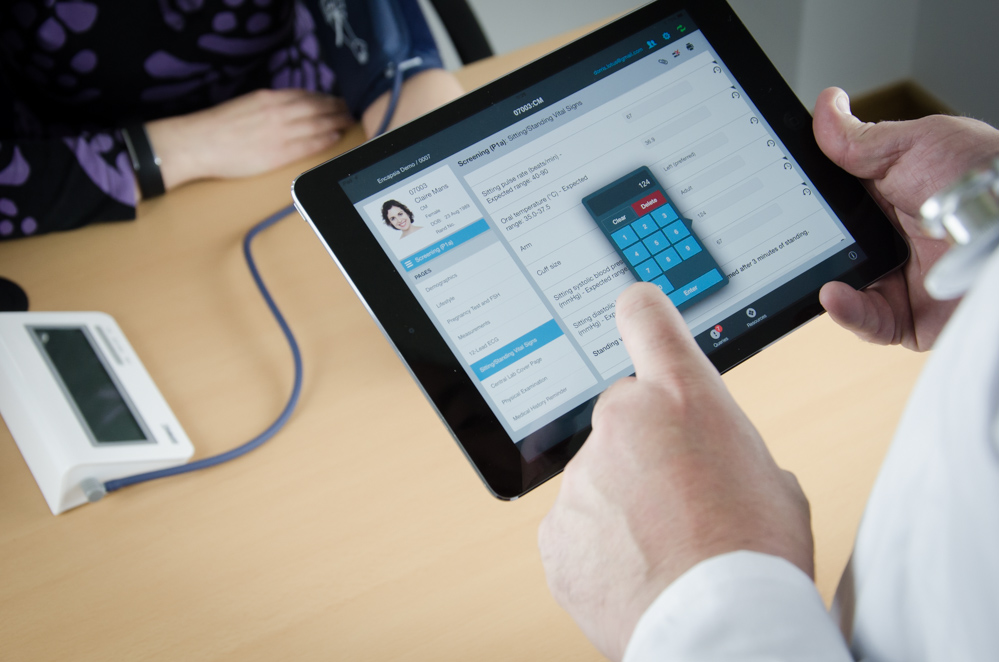Why Change?
Over the last decade, the number, complexity and cost of clinical trials has increased dramatically. This means even more challenges for Sponsors as they continue to meet their obligations to patient safety, data integrity and Regulatory compliance, whilst in turn trying to control costs and shorten timelines.
With these increases also comes declining productivity, lower approval rates, greater regulatory scrutiny, and more competition for patients and sites. To continue the traditional approach means dealing with the high costs and inefficiencies of having CRAs travel regularly to sites. Many now recognize the need for an alternative way of monitoring trials to both reduce these costs and improve effectiveness.
The time is right for change. Regulatory Agencies, such as the FDA, EMEA and MHRA see the need for more effective monitoring strategies while of course ensuring that obligations to patients and compliance are met.
Risk-Based Monitoring
This need for change continues to drive interest in Risk-Based Monitoring (RBM), an approach that focuses monitoring on sites, events and data points that indicate the greatest risk, in turn reducing slow and costly 100% Source Data Verification (SDV).
RBM is not new. Over the last 20 years monitoring frequency has been based on drivers like trial complexity, whilst at a site level the amount of monitoring has been guided by, for example, the number of errors found after conducting 100% SDV on the first two patients at every site, and then adjusting accordingly.
Today, RBM, supported by eDC systems is more sophisticated with remote or central monitoring now also enabling the review of programmed data checks, reports and dashboards in order to trigger additional SDV.
RBM however is not without its challenges. There is an investment required to identify, quantify and document the risk management plan. This must also ideally be completed before study start and requires input from multiple disciplines. For RBM to be conducted efficiently, it also requires technology that can track, trigger, respond and enable parameters to be updated during the study.
Some eDC systems have functions and features that help, whilst other stand-alone systems both manage risk-based assumptions and data to define triggers, but to date none have been purpose designed to seamlessly work with the data, the monitor and the sites.
In response Cmed has developed encapsia™, a system with all the functionality required in one single platform.
Next Steps in Remote Monitoring of Source Data
While RBM has many advantages, and even though eCRF data can now be reviewed remotely, a CRA stills needs to visit sites to review the source data. So in practice, although monitoring visits may be shorter, their number,
frequency and the time needed to arrange the visit, all remain unchanged as does the possible delay to key decisions. We also know there are numerous obstacles in accessing a site’s EMR system remotely plus the issue of scalability across large international, multicenter trials.
But what if the source data could be seen remotely without accessing an EMR?
To address this, Cmed has developed within encapsia™, multimedia functionality to take pictures, video, audio etc. of source data and allow authenticated copies to be viewed remotely. Imagine ECG traces, ICFs, images of EMR screens, pharmacy prescription logs, lab sheets, all being able to be seen remotely, immediately, and the source data linked to particular data fields or groups of data for easy quick review.
eSource, What and Why?
eSource, is where source data is captured electronically for the first time and is not written and then transcribed into an EMR or eDC system (or both). We all know the ideal is for sites to capture all their data in the EMR, and then during a clinical trial extract this into another system. However, they were neither designed, set up nor maintained with this as their primary purpose and hence the issues with access and scalability. The practical solution would be to provide technology at site which allows the capture of source data live in front of a patient, ideally in a way that will fit with the normal workflow of the clinic.
Cmed’s new clinical data suite, encapsia™, has been designed to do just this being fully portable and tablet based.
The Smart Monitoring Trilogy
As a CRO, Cmed understands the whole spectrum of trial types from Phase I and rare disease studies, right through to large complex multicenter oncology studies and peri approval trials, and that all these present different challenges and need approaches to monitor them effectively and efficiently.
Cmed believes that if the goal of faster, higher quality data at reduced cost is to be achieved a flexible combination of RBM, Remote Monitoring and eSource is the solution. For this approach to work optimally, a system is required that supports all three, both flexibly and simultaneously.
Cmed call this approach “Smart Monitoring” and in the webinar we will demonstrate how encapsia™ supports this approach to help to reduce the monitoring burden, time, cost and deliver higher quality data, faster.
Live, Actionable Data Analytics
The need for rapid review and assessment of data is critical in being able to take immediate and traceable responses. Imagine not only being able to see data coming in live on customizable dashboards but be able to highlight/tag data and discuss and implement actions which are all recorded in the system’s audit trail. This is the world of encapsia™.
Proposition
At Cmed, we work with you to develop monitoring strategies for any given study assessing key aspects, including critical endpoints, patients’ type, disease area, phase, duration and the type of sites etc. and to determine and agree the optimal approach for Risk-Based Monitoring, use of eSource and remote SDV.
During this webinar we will demonstrate the functionality of encapsia™ and participants will gain useful, practical knowledge on how “Smart Monitoring” supported by encapsia™ improves the quality, speed and cost of clinical trials.
Speakers

Graham Belgrave, Chief Operations Officer, CmedGraham Belgrave, Chief Operations Officer, CmedGraham Belgrave, Chief Operations Officer, Cmed
Graham Belgrave has over 30 years’ experience in the Pharmaceutical industry with a strong background in global clinical development, strategy, clinical operations, outsourcing and project management. As COO, he is responsible for Cmed’s day-to-day clinical operating activities. Prior to this, Graham held senior positions at companies such as Grunenthal GmbH, Vernalis, Pfizer and GSK, and has worked in consultancy and interim management positions, including in Oncology at Roche. He is a Fellow of the Royal Society of Medicine (Oncology and clinical research sections) and he is an experienced chairperson, speaker and committee member of various industry congresses and symposia.

Jon Carter, Product Manager, Cmed
Jon Carter is Product Manager at Cmed Technology. He has been with Cmed for over 10 years and recently transitioned from the CRO side of the business to the technology division. Jon began life in Cmed as a Database Programmer where he built Timaeus Clinical Databases. He particularly enjoyed programming trials with highly complex and adaptive schedules. After doing this for several years, he moved to the Cognos reporting team where he led the team that enabled the reporting of clinical data from Timaeus through to Cognos. As a Product Manager, Jon is now responsible for creating the requirements for Cmed’s new system Encapsia and helps to drive the direction of the product.
Who Should Attend?
Heads and Senior Directors of Project Management, Data Management, Innovation, and Clinical, within medium to large pharma
Xtalks Partner
Cmed
Cmed is an innovative, full service technology-led CRO. Cmed brings together experienced people and technology, providing customers with a friendly, proactive service, and delivers this service using advanced clinical data capture, management and reporting software and processes. Its vision is to conduct clinical trials better than anyone else, thus helping and saving lives.
Cmed’s new generation clinical data suite, encapsia™, streamlines the capture, management and reporting of clinical data beyond what is currently possible, saving customers time and money. Clinical data can be captured flexibly by eSource, multi-media and web eDC, saving monitoring time and costs, while being displayed in live visual insights, providing live analytics, and allowing within suite audit trailed actions. It is fully compliant with regulatory guidelines, and allows integration with existing systems.
Media Partner
You Must Login To Register for this Free Webinar
Already have an account? LOGIN HERE. If you don’t have an account you need to create a free account.
Create Account





